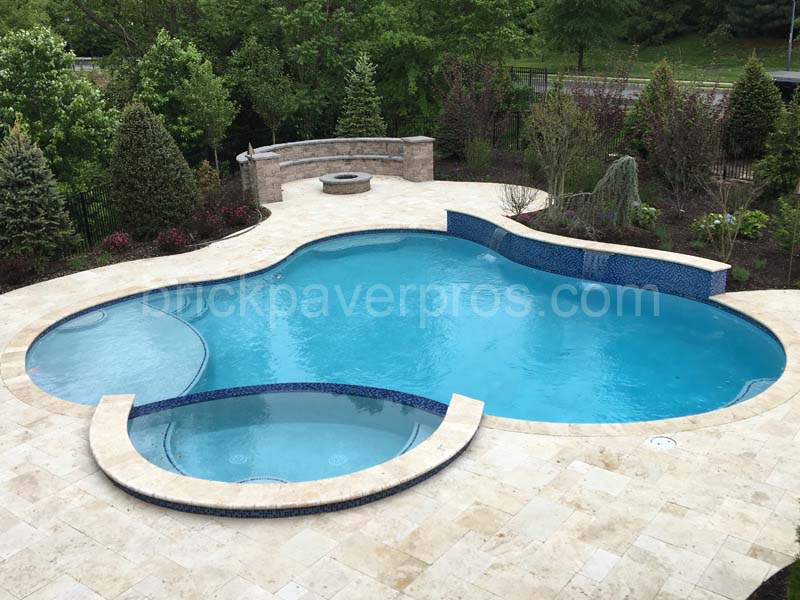Patios are an important resource for any home’s property. Nothing can be superior to anything getting a charge out of outside air and a delightfully finished yard in the organization of family and visitors or essentially discovering calm uninterrupted alone time with a book and a glass of wine.

Be that as it may, you require a decent, hardscaped put for the majority of this enchantment to occur. Soil and grass are a poor surface for seats and tables. Arranging rock and pea rock is efficient and easy to introduce, yet they will in general disperse. Solid chunks are work escalated and costly.
Materials
- Pavers
- Crushed stone or paver base
- Paver sand
- Polymeric sand,
- Plastic edging and spikes
Tools
- Two-by-four lumber, about 8 feet long to use as a screed
- Several lengths of 1-inch diameter PVC pipe
- Twine, string, or light-weight rope
- Wood Stakes
- Spade or shovel
- Wheelbarrow
- Tape measure
Introduction
Patio Pavers Installation is simply the do-it yard clearing arrangement that about any do-it-yourselfer can deal with. Yet, how would you deal with the creases between the pavers? Earth or free fill rock are immediately swarmed with weeds. Outside stone mortar viably hinders those holes however can be troublesome for a beginner bricklayer to apply legitimately. Polymeric sand is the crease filler between the pavers that pours like sand yet hardens like mortar.
Design Your Patio
Yard pavers are just on a par with their base. You will require a 5-inch layer of pounded rock or paver base, finished with a 1-inch layer of paver sand. The pavers lay on the sand, at that point polymeric sand is cleared in the creases between the pavers. Your planned porch’s width and length duplicated by the required material profundities will disclose to you how much rock base and sand to arrange.
Stake the Work Area
Drive a stake at every one of the four corners of the expected yard site. Run the twine or string around the four stakes to frame a square or square shape. With your measuring tape, measure two converging diagonals of your porch region to check for square. On the off chance that the two diagonals are a similar length, your territory is square (which means, each of the four corners is at 90 degrees).
Burrow the Patio Perimeter Area
Uncover the border of the porch territory by first making a channel around 6 crawls past the checking string. On the off chance that cutting into the grass, it is useful to utilize a finishing edger: a level, straight instrument like a scoop that is fit for cutting straight lines.
Presently, with the edge built up, evacuate your stamping string however leave the stakes set up.
Dig the Patio Perimeter Area
Expel the dirt or turf from inside the edge zone, burrowing down an entire 7 inches. Place the undesirable materials in the handcart and arrange in a manure container or in another piece of your yard. Continue checking your profundity, since you need to keep it as near the 7-inch stamp as could reasonably be expected.
Include Landscape Fabric
Cut any stray tree roots. Expel substantial or sharp shakes. Utilize your manual alter or leased plate compactor to pack down the dirt in the yard region. At that point take off two layers of scene texture, with the best layer situated 90 degrees to the base layer. Cover the yard border by around 4 inches.
Include the Gravel Base
Put on your residue veil. Spill out around 2 crawls of the rock base material to the yard region. Splash it down daintily, at that point pack it down a level. Include two additional layers, each layer 2 inches thick. As you are including these consequent layers, start to slant your yard territory to advance waste. The slant should keep running at a proportion of 1:4 (vertical to flat). Check the incline with the air pocket level. Ensure that the incline flees from the house.
Include the Sand Base Layer and Screed It
Your last bed is a layer of sand that goes about as a delicate place to set and alter the pavers. To start with, reveal a layer of scene texture over the base rock to keep the sand from filtering through the rock.
So as to keep up an ideal 1-inch profundity for the sand, set out the two lengths of PVC pipe parallel to one another and around 6 feet separated. Pour sand between the funnels, covering them. Lay the piece two-by-four over the highest points of the PVC channels, at that point screed it toward you in a delicate raking movement.
